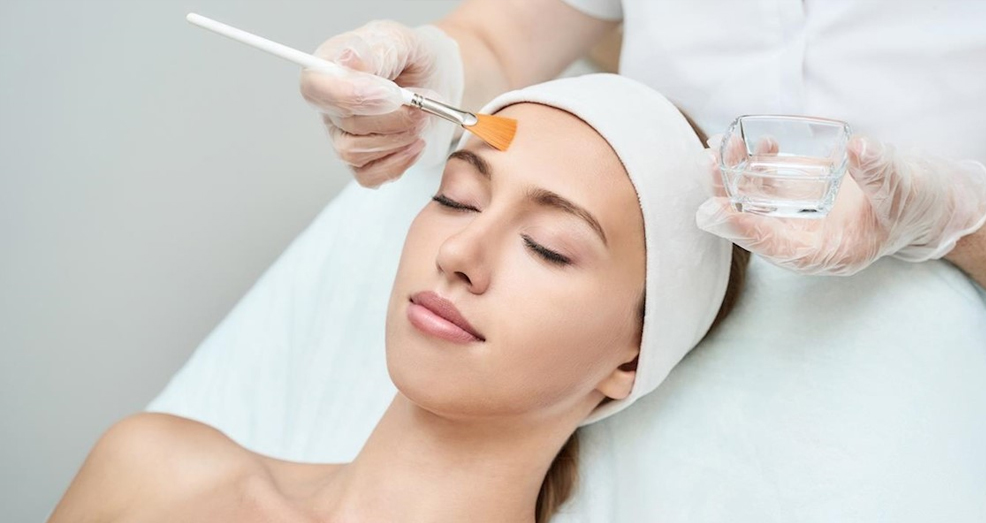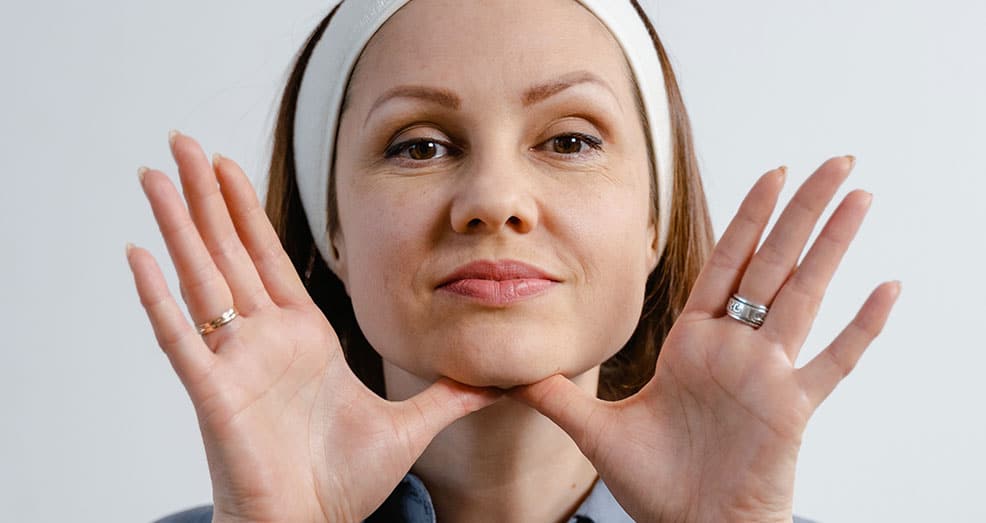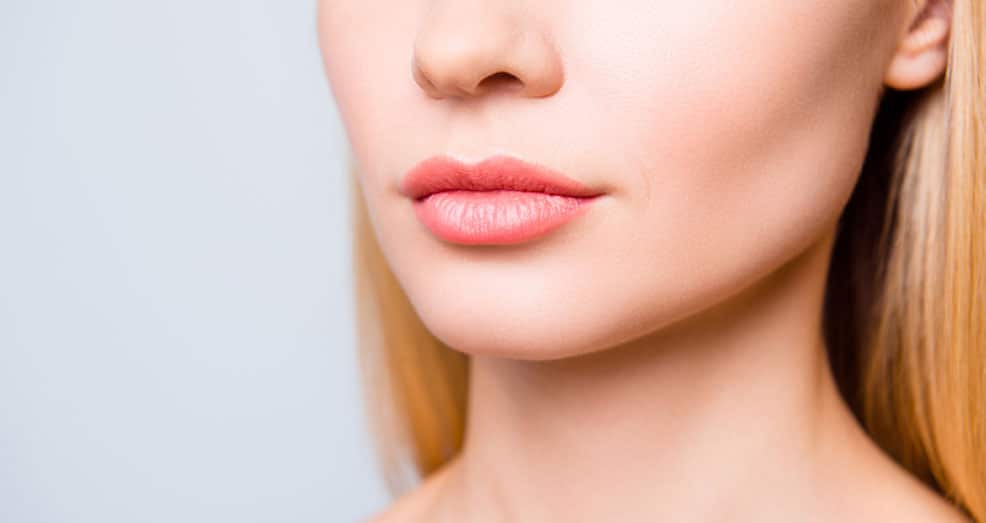A Chemical peel is a skin resurfacing procedure in which a solution is applied to the skin to improve the appearance or feel of the skin. It causes the skin to exfoliate and eventually peel off revealing new, clearer, smoother, firmer, and less wrinkled skin underneath.
Chemical peels can be used to treat a variety of things including:
- Sun damage
- Hyperpigmentation
- Fine lines and wrinkles
- Scars
- Acne scars
- Uneven skin tone and redness
- Melasma
Types of Chemical Peels
There are three types of chemical peels and the type you undergo depending on what is being treated. These include:
- Light chemical peel. This is a superficial peel that removes the outer layer of the skin. Mild acids such as alpha-hydroxy acid are used to gently exfoliate the epidermis. The superficial chemical peel is used to treat acne, uneven skin tone, fine wrinkles, and dryness. It can be done every two to five weeks.
- Medium chemical peel. The medium peel removes skin in the outer skin layer and portions of the upper-middle layers of the skin using trichloroacetic or glycolic acid. It is more effective for removing damaged skin layers thus it is used to treat wrinkles, uneven skin tone, and acne scars. A repeat procedure may be required to achieve or maintain the desired results.
- Deep chemical peel. A deep peel which can be phenol or trichloroacetic acid fully penetrates the middle layer of the skin to remove damaged skin cells. It is usually recommended for scars, deeper wrinkles, or precancerous growths. Only one treatment of the deep chemical peel can be done.
Undergoing a chemical peel is however not for everyone. Individuals who are cautioned against a chemical peel or certain types of a chemical peel include those who:
- Are pregnant
- Have a history of ridged areas caused by keloids (overgrowth of scar tissue)
- Have taken oral acne medication in the last six months
- Have severe or frequent outbreaks of cold sores
Preparing for a Chemical Peel
It is important to choose a practitioner who has knowledge of the skin and the procedure because the results are variable and depend on the expertise of the individual performing the procedure. If a chemical peel is improperly done, especially a deep one, it can result in complications such as permanent scars or infection.
During your chemical peel consultation, your provider will do the following:
- Review your medical history which will include your current and past medical conditions, medications that you are currently on or recently taken, as well as any cosmetic procedures that you have undergone (if any).
- Perform a physical exam that involves examining your skin and treatment area to determine which type of peel would benefit you the most.
- Discuss your expectations and take you through what the treatment involves and the potential risks.
Before the chemical peel treatment, you will be asked to:
- Avoid any type of Retin-A or retinol topical medication for at least 48 hours before the procedure
- Take antiviral medication if you have a history of cold sores or fever blisters to prevent a viral infection
- Use a retinoid cream a few weeks before the treatment to help with the healing and prevent skin darkening. These are usually stopped two days prior to the procedure.
- Use retinoid creams to improve the results of the treatment
- Avoid unprotected sun exposure as too much sun exposure can cause permanent irregular pigmentation around the treatment area
- Avoid epilating, waxing, using depilatory hair removal products, or hair bleaching a week before the peel
- Avoid using exfoliants or facial scrubs a week before the treatment
- Arrange for a ride home, especially if you will be undergoing a medium or a deep peel that requires sedation
The procedure of a Chemical Peel
A chemical peel is an outpatient procedure. Before the procedure, your hair will be protected, your face cleaned, and your eyes covered with goggles, tape, gauze, or ointment.
Pain relief is not necessary for a light peel. However, for a medium peel, you might be given a painkiller and a sedative and for a deep peel, you will receive a sedative, a regional anesthetic, and an IV drip for fluids. Your heart will also be closely monitored especially with Phenol peels..
- Light chemical peel
Your provider will apply the chemical solution which contains salicylic acid or glycolic acid to your skin using a cotton ball, brush, gauze, or sponge. As the treatment area is whitening you might feel a mild stinging. A neutralizing solution will then be applied to the treatment area or the area can be washed to remove the chemical solution from the skin.
- Medium chemical peel
Your provider will use a cotton-tipped applicator or a gauze to apply the medium chemical peel to your skin. The chemical solution contains trichloroacetic acid which can sometimes be combined with glycolic acid. When the treated skin has whitened, a cold compress will be applied to soothe the skin on the treatment area. You might also be provided with a hand-held fan to cool the area. No neutralizing solution is required but you might experience a burning or stinging sensation for up to 20 minutes.
- Deep chemical peel
You will be sedated, receive IV fluids, and your heart rate will be closely monitored. Your provider will use a cotton-tipped applicator to apply phenol to your skin which will begin to turn white or gray. If a phenol peel is used, the procedure will be done in portions at about 15-minute intervals to limit your exposure to phenol. The whole facial procedure should take about 90 minutes.
Recovery & Results
The recovery time for each peel varies.
- Light chemical peel
The recovery time for the light chemical peel takes about four to seven days and the skin might be lighter or darker during this time.
- Medium chemical peel
It takes about five to seven days to recover from the medium chemical peel but the redness might persist for a few months. The skin will swell, have crusts, and brown blotches before revealing the new smooth skin.
- Deep chemical peel
Recovery from the deep chemical peel involves experiencing severe redness, swelling with throbbing or burning sensations. The eyelids might swell shut and it can take about 2 weeks for the new skin to form. The cysts or white spots usually last for several weeks and the redness for some months.
You will be given specific instructions on how to wash your face and moisturize, as well as the products you should use. Completely avoid the sun until your skin is fully healed. Your provider will let you know when you can resume using makeup and other cosmetic products.
Your new skin will be sensitive and it is advisable to use sunscreen and to avoid the sun.
To Know More
Would you like to understand what options are available for Chemical Peels in Dubai? Meet one of our experts at Al Shunnar Plastic Surgery for a personal consultation to develop a tailor-made plan for you. Contact us or book an appointment and our patient care coordinators will identify the most suitable expert for you.



